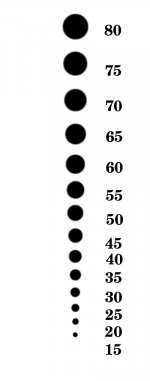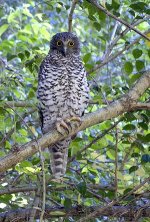If you can pull an owl in with recordings, you are likely to get your best views at close range
Ronald, #Jonathan:....While I'm really fascinated by owls by myself I think it's a good idea to take some care of the 'birdwatcher's code' (e.g.
http://www.bto.org/sites/default/files/u10/downloads/taking-part/health/bwc.pdf) Using a flashlight is a bit too invasive to nature for my taste. IMO using birdsounds to attrack birds should be done very carefully and not just for personal purposes.
Steve
I'm no owl expert, but I'm known around these parts to the great mirth of all of those at the local bowlo as 'whoo whoo' among others |

| due to my penchant for elaborate owl hollow constructions, falling out of trees, and warning of the foolhardiness of immitating ( B

) certain owl calls!
Apart from disturbing the poor birdies hunting, mating, territory, security etc, calling out anything more than a casual 'mo-poke' round here, will see not only a curious inspection, but likely great strips torn out of your hide, and may even result in the loss of your eyeballs........its happened before :-C
Of the many large and fearsome owls around here (
Barking, Masked, Sooty), they seem like sparrows when compared to the
Powerful Owl - see attached (2ft+ tall, 4&1/2ft+ wingspan, 4lbs+, and talons the size of a man's hand :eek!: )..........you definitely don't want to make one angry, and you definitely don't want to see him "at close range"........Indeed!
I've read this thread with interest, hoping to unlock the secret code to the perfect owling binoculars - but the bottom line is that you're going to need a set of eyes to see through any binoculars (perfect or not). Take only care, and give only thanks :t:
Chosun
_________________________________________________________________
For long, long time.............. the earth - she cry....
now, the children - they cry too....
All terribly, terribly sad...





